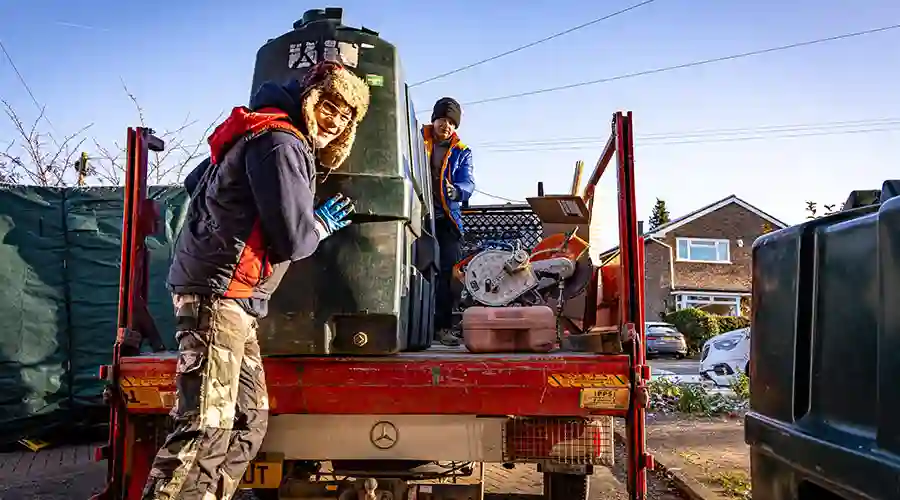The presence of aging or obsolete oil tanks on residential properties can pose potential risks, necessitating their eradication through a careful and well-executed removal process. “Eradicating Oil Tanks: The Complete Handbook for Removal” serves as a comprehensive guide, providing homeowners with the knowledge and strategies required to navigate the oil tank removal process effectively from start to finish.
1. Acknowledging the Imperative: Recognizing Signs of Aging Tanks
The handbook begins by emphasizing the imperative of eradicating oil tanks, urging homeowners to recognize the signs of aging or deteriorating tanks. Rust, corrosion, and potential leaks serve as red flags that prompt homeowners to consider the necessity of removal. Acknowledging these signs is crucial for initiating the eradication process and ensuring the safety and integrity of the property.
2. Environmental Stewardship: Minimizing Impact and Preparing for Removal
Environmental stewardship takes center stage in the oil tank removal handbook. Homeowners need to assess and minimize the potential impact on the surrounding environment, including soil and groundwater. This section of the handbook emphasizes proactive measures to mitigate environmental consequences throughout the removal process, aligning with the goal of responsible eradication.
3. Navigating Regulatory Waters: Securing Permits and Ensuring Compliance
Successfully navigating the regulatory landscape is a critical step in the eradication process. Homeowners must secure the necessary permits and adhere to local regulations governing oil tank removal. Compliance ensures the legality of the eradication, streamlining the process and avoiding potential delays and penalties.
4. Professional Collaboration: Leveraging Removal Expertise
Collaboration with removal experts is a key aspect of the handbook. Removal professionals bring specialized knowledge about tank conditions, potential risks, and optimal removal methods. Consulting with experts ensures homeowners make informed decisions, contributing to a strategic and efficient approach to residential oil tank eradication.
5. Risk Assessment: Identifying and Mitigating Potential Hazards
Conducting a thorough risk assessment is pivotal for success in the eradication process. Identifying potential hazards, both structural and environmental, empowers homeowners to implement targeted mitigation strategies. A comprehensive risk assessment minimizes the likelihood of accidents and ensures a safe and successful eradication operation.
6. Choosing the Right Removal Method: Tailoring to Property Dynamics
Selecting the appropriate removal method is a crucial decision highlighted in the handbook. Factors such as the tank’s condition, location, and potential environmental impact guide this choice. Tailoring the removal method to property dynamics ensures an efficient and safe eradication, minimizing disruption and mitigating potential risks associated with the removal process.
7. Strategic Site Excavation: Precision in Uncovering and Eradicating the Tank
Strategic site excavation becomes a crucial phase in the handbook. Skilled operators, equipped with specialized tools, must execute precise digging techniques to uncover and eradicate the tank without causing damage or environmental disruption. Precision in site excavation is vital for the success of the oil tank removal process and the ultimate eradication of the tank.
8. Pumping Protocols: Safely Extracting Contents and Contributing to Eradication
The handbook delves into strategic pumping protocols for safely extracting the tank’s contents. Advanced pumping technologies minimize the risk of spills, ensuring a controlled and clean extraction process. Adhering to environmental regulations guarantees the responsible handling and disposal of extracted oil, contributing to the overall eradication effort.
9. Tactical Lifting and Transport: Ensuring a Secure Transition Post-Eradication
Tactical lifting and transport are pivotal elements explored in the handbook. Precision and specialized equipment ensure a secure extraction without causing damage. Skilled operators contribute to a safe eradication process, minimizing risks associated with lifting and transporting the tank from below ground to above ground, ensuring a secure transition post-eradication.
10. Post-Eradication Verification: Confirming Success and Environmental Integrity
The handbook concludes with post-eradication verification, a critical step highlighted in the process. Environmental testing and soil analysis provide assurance that the eradication process has been successful, leaving the property free from contamination. Confirming success ensures homeowners can move forward confidently, having successfully completed the comprehensive process of oil tank eradication
Conclusion:
“Eradicating Oil Tanks: The Complete Handbook for Removal” provides homeowners with a comprehensive and systematic guide for successfully navigating the complexities of oil tank removal. From recognizing signs of aging tanks and preparing for potential environmental impact to navigating regulations, consulting with professionals, and implementing safe removal methods, this handbook ensures a smooth and responsible eradication process. Risk assessments, strategic excavation, pumping protocols, tactical lifting, and post-eradication verification contribute to the safety and success of the oil tank removal, allowing homeowners to confidently eradicate aging or obsolete oil tanks from their properties.




